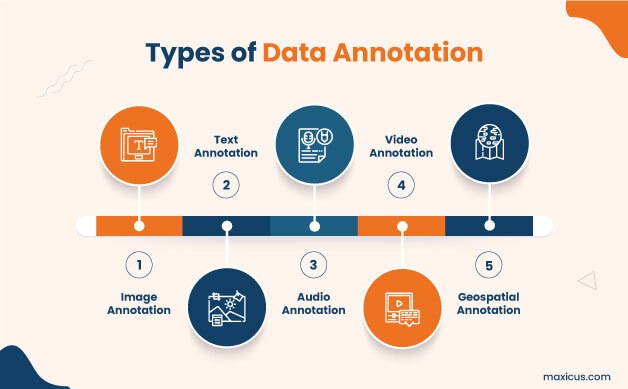In the era of data-driven technology, the demand for accurately labeled datasets has never been higher, particularly in the realms of artificial intelligence (AI) and machine learning (ML). Image annotation, a crucial step in preparing data for these technologies, involves tagging and categorizing visual information to enable machines to understand and interpret images effectively. As the complexity of image datasets grows, many organizations are turning to outsourcing image annotation services to meet their needs. This blog explores the advantages of outsourcing these services and how they can enhance the efficiency of your AI and ML projects.
The Role of Image Annotation
Image annotation is the process of adding meaningful metadata to images to help AI models learn from visual data. This metadata can include various types of labels, such as object detection, where objects within an image are identified and marked with bounding boxes. Another type is image segmentation, which involves dividing an image into distinct regions and labeling each one to help models understand the shapes and boundaries of objects. Facial recognition tasks require annotating facial features or expressions, and scene classification involves identifying and labeling different environments within an image. Accurate annotation is vital because it ensures that machine learning algorithms can learn from well-labeled, high-quality data, ultimately improving the performance of AI models.
Advantages of Outsourcing Image Annotation
Outsourcing image annotation offers several compelling benefits for businesses and organizations. One of the primary advantages is cost efficiency. Building and maintaining an in-house team of annotators can be costly, particularly when dealing with large volumes of data. By outsourcing, organizations can access specialized services without incurring the overhead costs associated with hiring, training, and managing a dedicated team. Service providers often operate in regions with lower labor costs, which translates to significant savings.
Additionally, outsourcing image annotation gives organizations access to expertise and specialized skills. Outsourcing companies typically employ teams of skilled annotators who are well-versed in industry best practices and various types of annotation tasks. This expertise ensures that the data is annotated accurately and reliably, which is essential for training effective AI models. The quality of the annotated data is crucial, as it directly impacts the performance of the machine learning algorithms.
Scalability is another major benefit of outsourcing. Managing large datasets or fluctuating project volumes can be challenging for in-house teams. Outsourcing provides the flexibility to adjust the size of the team based on project needs. Service providers can quickly mobilize additional resources or scale down their involvement as required, allowing organizations to handle both large and small projects efficiently.
Moreover, outsourcing can lead to faster turnaround times. Dedicated image annotation service providers often have established processes and advanced tools that streamline the annotation process. This efficiency results in quicker delivery of annotated data, enabling organizations to advance their AI and machine learning projects without unnecessary delays. Speed is particularly important in rapidly evolving fields where timely data processing can provide a competitive edge.
Conclusion
Image annotation outsourcing services offers numerous advantages, including cost efficiency, access to expertise, scalability, and faster turnaround times. As AI and machine learning technologies continue to advance, the need for high-quality, accurately labeled datasets becomes increasingly critical. By leveraging outsourcing, organizations can efficiently manage their annotation needs, ensuring that they have the well-prepared data required to train effective and reliable AI models. In a landscape where data quality and speed are paramount, outsourcing image annotation provides a strategic solution to meet these demands and drive technological innovation.





